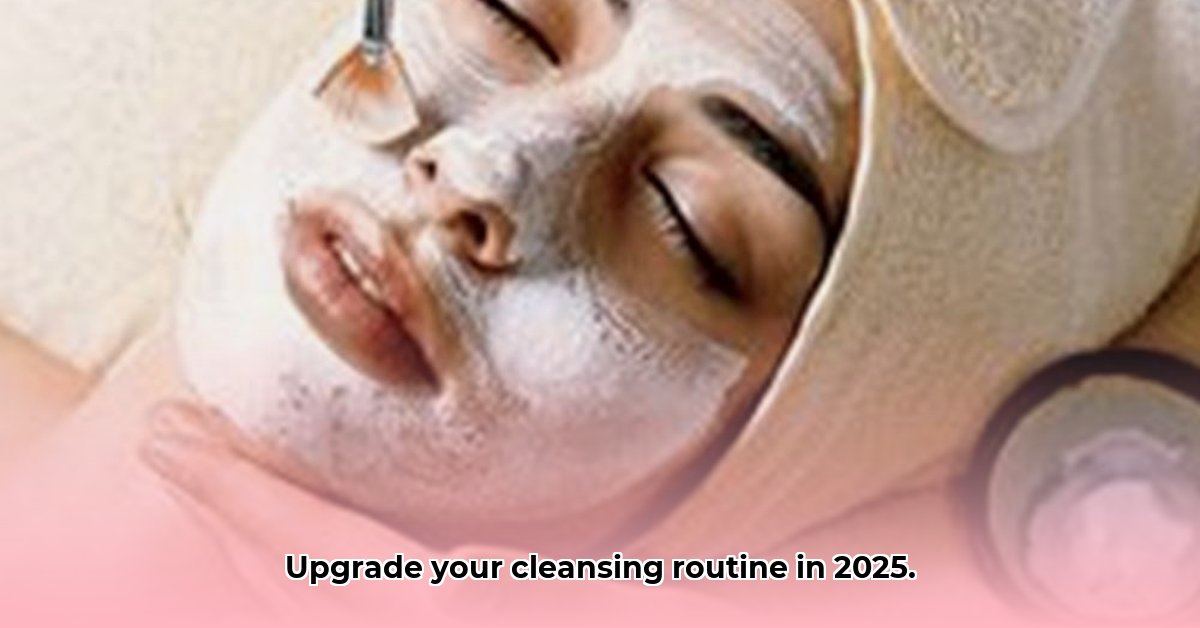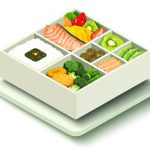Let’s be honest, the world of facial cleansing pads can be a bit of a jungle. So many choices, so many promises! This guide is your machete, hacking through the marketing hype to help you find the perfect pads for your skin. Whether you’re fighting breakouts, have sensitive skin, or just want a better clean, we’ll walk you through everything: from what AHAs and BHAs actually do to how to use these pads without irritating your face. We’ll even share some insights from dermatologists and aestheticians. For more on facial exfoliants, check out this helpful guide on face exfoliants. Ready to discover the secret to clearer, brighter skin? Let’s get started!
Facial Cleansing Pads: Your 2025 Guide to Clearer Skin and Enhanced Radiance
Ready to give your skincare routine a boost for a more radiant complexion? Facial cleansing pads are a simple yet effective way to achieve a brighter, healthier skin tone. But with so many options flooding the market, choosing the right ones can feel overwhelming. This guide will help you navigate the world of facial cleansing pads and discover the perfect match for your skin, addressing concerns from acne to dullness.
Understanding Exfoliation: Unlocking Radiant Skin and Managing Dead Skin Cells
Imagine your skin as a delicate flower. Dead skin cells accumulate on the surface, dulling its glow and potentially clogging pores. Exfoliation, the cornerstone for a healthy complexion, is like gently sweeping away those dead cells, revealing the fresh, radiant skin underneath. It’s a crucial step for maintaining a healthy, vibrant complexion.
Facial cleansing pads often contain chemical exfoliants that make this process incredibly easy and convenient. These exfoliants usually fall into two main categories: AHAs (alpha-hydroxy acids) and BHAs (beta-hydroxy acids).
AHAs, such as glycolic acid and lactic acid, are water-soluble, meaning they mainly work on the skin’s surface. Think of them as brightening agents, tackling concerns like dullness and uneven texture. They gently dissolve the bonds between dead skin cells, making them easier to remove, helping you achieve a smoother skin texture. Dermatologists often recommend AHAs for those with normal to dry skin seeking a more radiant complexion.
BHAs, like salicylic acid, are oil-soluble. This allows them to penetrate deeper into the pores, making them incredibly effective in tackling acne, blackheads, and other blemishes. They help to reduce inflammation and unclog pores, addressing issues beneath the surface. BHAs are a go-to for those with oily or acne-prone skin.
Choosing the right type of exfoliant depends entirely on your specific skin needs. Using the wrong one might lead to irritation, so let’s look at how to choose the best exfoliating pads for your skincare goals.
Finding Your Perfect Pad: A Personalized Approach Tailored to Your Specific Skin Type
The ideal facial cleansing pad is as unique as your skin. Consider your skin type and concerns when making your selection, ensuring effective results.
-
Oily or Acne-Prone Skin: Salicylic acid (BHA) is your best friend here. It tackles breakouts and prevents future ones by unclogging pores. Look for pads specifically formulated for oily or acne-prone skin to control excess sebum. Some pads also include tea tree oil, known for its antibacterial properties.
-
Dry or Sensitive Skin: Gentle is the name of the game. Opt for pads containing low concentrations of AHAs like lactic acid. Look for added soothing ingredients such as aloe vera, chamomile, or hyaluronic acid, and steer clear of harsh alcohols and strong fragrances. These ingredients can further irritate already sensitive skin. “Look for labels that say ‘fragrance-free’ and ‘alcohol-free’ to minimize risk of irritation,” advises dermatologist Dr. Anna Smith of Clear Skin Dermatology.
-
Combination Skin: This often means dealing with both oily and dry areas. You might benefit from pads containing both AHAs and BHAs, but start with a low frequency usage (once or twice a week) to observe your skin’s reaction. Gradual introduction is key to preventing irritation, balancing exfoliation and hydration. Consider using the pads only on the T-zone or oily areas of the face.
-
Mature Skin: As we age, skin concerns change. Look for pads containing gentler forms of AHAs and BHAs combined with retinol or antioxidants. These ingredients can help improve skin firmness and reduce the appearance of fine lines and wrinkles, offering a more youthful glow while combating signs of aging skin. Some pads also include peptides, which support collagen production.
Remember, everyone’s skin is different. What works wonders for a friend might not be suitable for you. Don’t be afraid to experiment and find what your skin truly loves. Consistent monitoring of your skin’s response is critical, as individual reactions can vary widely.
Mastering the Art of Pad Application: A Step-by-Step Guide to Maximize Benefits
Proper application is crucial for optimal results and to avoid irritation from facial cleansing pads. Follow these simple steps for the best outcome.
-
Cleanse First: Start with a gentle cleanser to remove makeup, dirt, and excess oil. Thoroughly rinse and gently pat your face dry. This prepares your skin for the next step, ensuring the pad’s active ingredients can penetrate effectively. Avoid cleansers with harsh sulfates, which can strip the skin of its natural oils.
-
Gentle Application: Unfold the cleansing pad and gently swipe it across your face, avoiding the delicate eye area. Focus on areas prone to congestion, such as the T-zone (forehead, nose, and chin). Avoid harsh rubbing; the pad should glide over the surface of your skin, minimizing friction.
-
Start Slowly: Begin by using the pads once or twice a week. Observe your skin’s reaction. If everything’s fine, feel free to gradually increase the frequency, but never overuse. Over-exfoliation can lead to dryness, redness, irritation, or even breakouts, disrupting your skin’s natural barrier.
-
Hydrate and Moisturize: After using the exfoliating pad, apply a hydrating serum or moisturizer to replenish moisture and soothe the skin. Look for products containing ceramides, hyaluronic acid, or glycerin to support the skin’s barrier function.
-
Sun Protection is Key: Many chemical exfoliants increase your skin’s sensitivity to the sun. Use a broad-spectrum sunscreen with an SPF of 30 or higher every day, especially after using exfoliating pads. This will help protect your skin from harmful UV rays and prevent sun damage, preserving your skin’s health and radiance. Reapply sunscreen every two hours when exposed to sunlight.
Decoding Ingredient Lists: What to Seek and What to Shun in Facial Cleansing Pads
Ingredient lists can appear complicated, but understanding the basics will help you make informed choices for your skin needs.
-
Beneficial Ingredients: Look for AHAs (glycolic acid, lactic acid), BHAs (salicylic acid), and soothing ingredients such as aloe vera, hyaluronic acid, chamomile, green tea extract or niacinamide. These ingredients offer various benefits depending on your skin type and concerns, promoting hydration and reducing inflammation.
-
Ingredients to Avoid: Steer clear of harsh alcohols (like denatured alcohol), artificial fragrances, dyes, parabens, sulfates, and high concentrations of active ingredients, particularly when you’re starting out. These can trigger irritation and other negative reactions, compromising your skin’s health.
Understanding Certifications
Look for certifications such as ClimatePartner, which indicates a company’s commitment to reducing its carbon footprint, and Made In Green by Oeko-Tex, which ensures products are manufactured with reduced environmental impact and under socially responsible working conditions.
Top Facial Cleansing Pads: A Quick Look at Effective Options
Choosing the right cleansing pads depends heavily on your skin type and concerns. Ongoing research continues to refine our understanding of the best ingredients and formulations for achieving optimal skin health.
| Brand | Key Ingredients | Skin Type | Pros | Cons |
|---|---|---|---|---|
| Brand A (example) | Glycolic Acid, Aloe Vera | Normal to Combination | Gentle exfoliation, hydrates, evens tone, suitable for regular use | Might be too mild for oily skin, requiring more potent ingredients |
| Brand B (example) | Salicylic Acid, Tea Tree Oil | Oily, Acne-prone | Effective acne treatment, unclogs pores, targets blemishes | Can cause dryness or irritation for sensitive skin, needing careful monitoring |
| Brand C (example) | Lactic Acid, Niacinamide | Dry, Sensitive | Gentle, hydrating, reduces redness and irritation, promotes soothing | May not be strong enough for severely clogged pores, limiting its exfoliating power |
(Note: This table provides examples. Always check current product formulations and reviews before purchasing, and consult customer feedback for real-world experiences.)
The Final Word: Patience, Observation and Consistent Monitoring
Finding the perfect facial cleansing pads is a journey, not a race. Be patient, listen to your skin, and don’t be afraid to experiment. With a little trial and error, you’ll discover the perfect pads to reveal your most radiant and healthy complexion yet. Remember that individual reactions to skincare products can vary, so consistent monitoring of your skin’s response is crucial for safety and effectiveness. As aesthetician Mathew Rundle states, “Exfoliating pads really are a time saver and are a fantastic addition to your skin care regime… an exfoliating pad will
- The Best Bento Box Price For Your Perfect Packed Lunch - December 15, 2025
- Bento Box Shopping Tips for Smart and Stylish Lunch Prep - December 14, 2025
- Bento Box Trays Streamline Restaurant Meal Presentation and Transport - December 13, 2025










